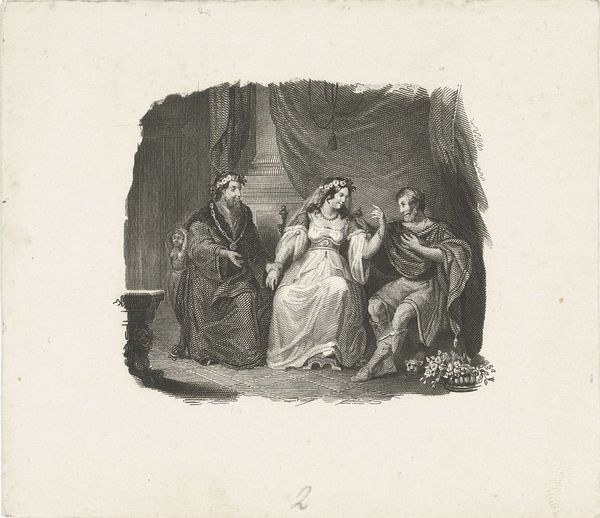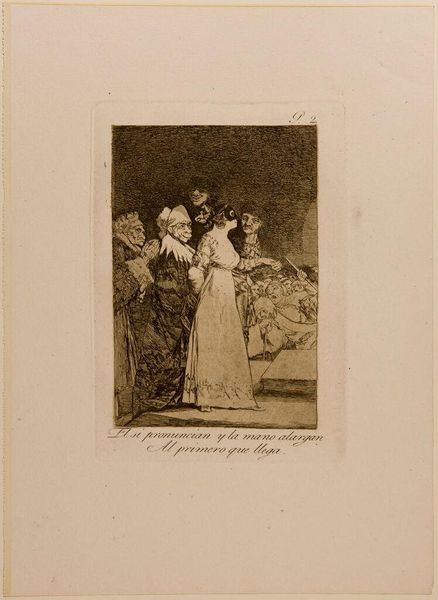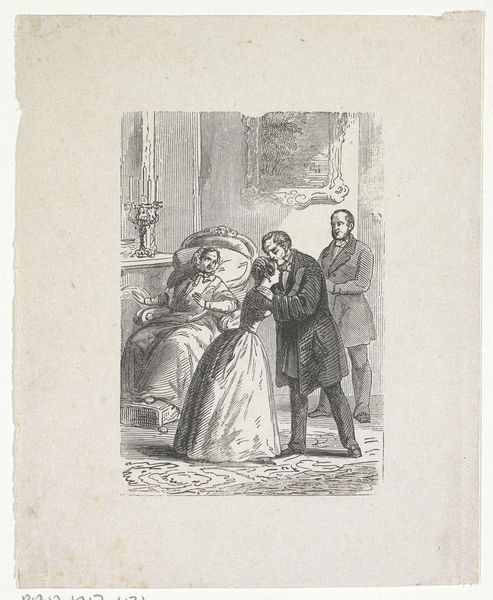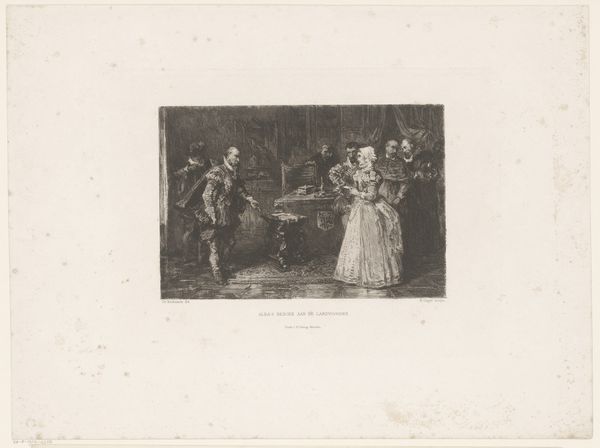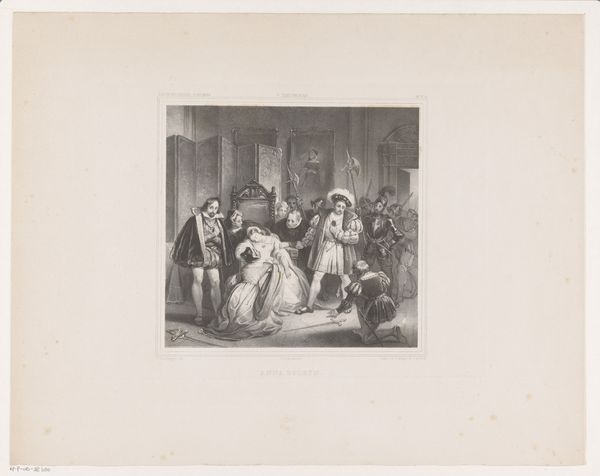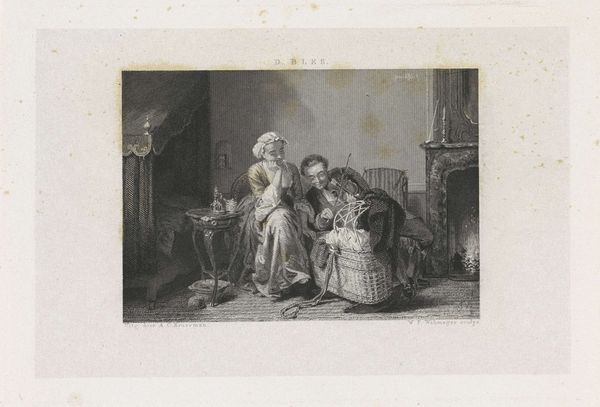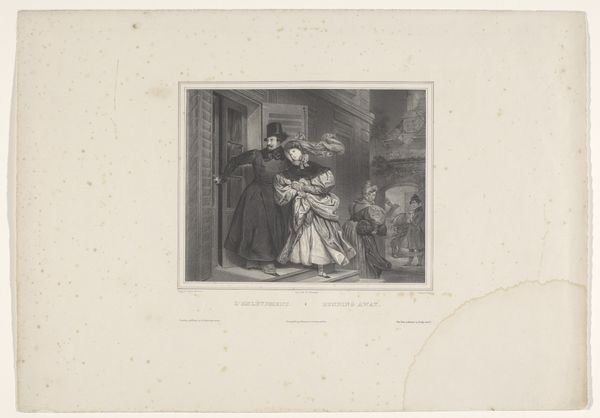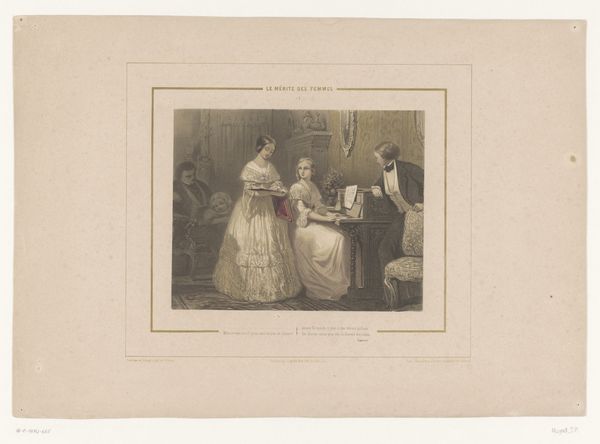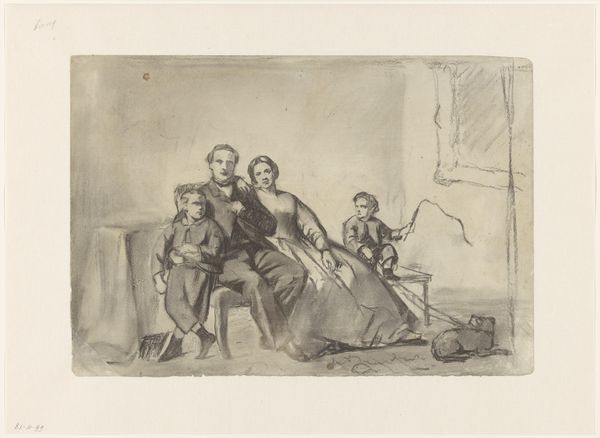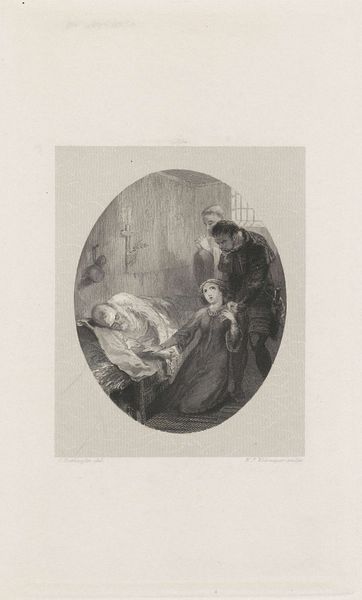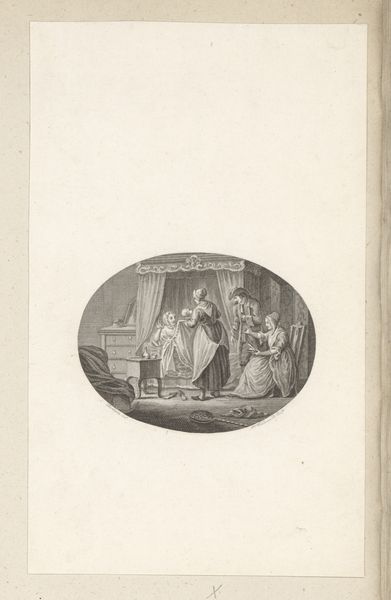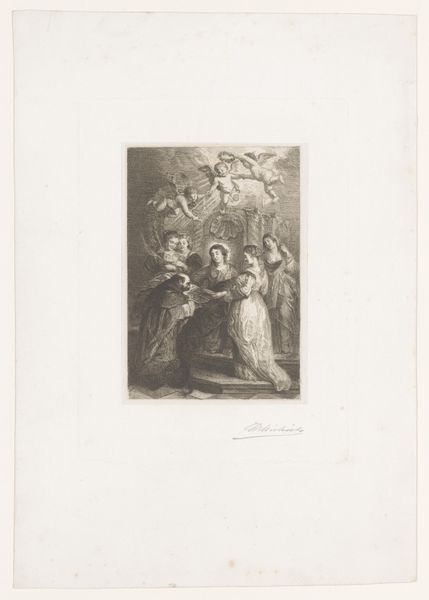
Vrouw zittend tussen haar vader en haar (toekomstige) man 1830 - 1845
0:00
0:00
drawing, print, ink, engraving
#
portrait
#
drawing
#
light pencil work
#
quirky sketch
#
narrative-art
#
shading to add clarity
# print
#
pencil sketch
#
old engraving style
#
figuration
#
personal sketchbook
#
ink
#
idea generation sketch
#
romanticism
#
pen-ink sketch
#
sketchbook drawing
#
pencil work
#
genre-painting
#
engraving
Dimensions: height 118 mm, width 133 mm
Copyright: Rijks Museum: Open Domain
Editor: This is "Vrouw zittend tussen haar vader en haar (toekomstige) man," made between 1830 and 1845 by Henricus Wilhelmus Couwenberg, currently at the Rijksmuseum. It’s a delicate drawing. The contrast is incredible. How would you read this engraving? Curator: Considering Couwenberg’s methods, the creation of this image, reproduced in print, makes it accessible to a wider audience. It is no longer just for the elite but enters the marketplace as a commodity. How does this process challenge our traditional view of fine art? Editor: It challenges it by making art less precious. More people have access to it because it is mechanically reproduced and doesn't require the skill and artistry of unique pieces. Curator: Exactly. Think about the materiality here: ink, paper, the engraving tools themselves. Each carries social meaning. The availability of these materials, the skills required to manipulate them—all speak to a certain level of industrial and economic development. Are there other indicators in the artwork itself about the state of manufacture in that era? Editor: Well, it gives me a sense of theater. This scene feels quite posed and formal, as if people were posing for a picture at the time. I guess, like the advent of photography or the staging involved in a theatrical performance? Curator: Interesting point. Consider the narrative presented here – a woman between her father and potential husband. How does this image reinforce or challenge existing societal expectations of women at the time through its materials and production? Editor: Perhaps the mass production of such an image normalizes this specific narrative about family roles? Curator: Precisely. The means of producing art and disseminating its message were critical to shaping perceptions. Editor: I've definitely learned a lot today. It is essential to think about art not only visually but also socially, focusing on the process by which an idea becomes an object with significance and influence.
Comments
No comments
Be the first to comment and join the conversation on the ultimate creative platform.
